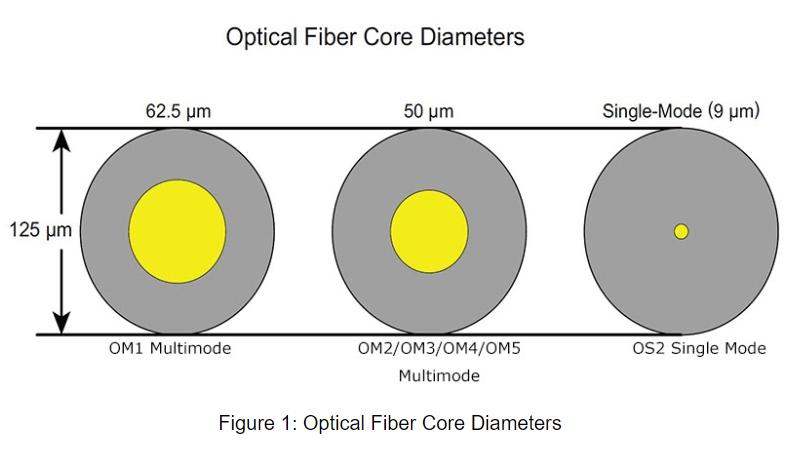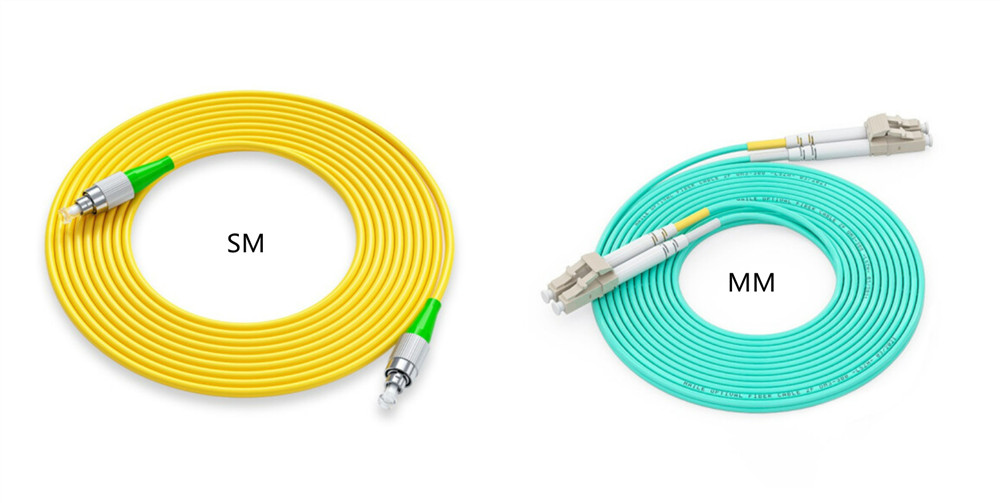I-optical fiber iyifayibha eguquguqukayo, esobala eyenziwe ngengilazi ekhishwe noma ipulasitiki, ijiyile kancane kunezinwele zomuntu.Imicu yokubona isetshenziswa kaningi njengendlela yokudlulisa ukukhanya phakathi kwamaphethelo amabili efayibha futhi ithole ukusetshenziswa okubanzi kwezokuxhumana ze-fiber-optic, lapho ivumela ukudluliswa kwamabanga amade futhi kuma-bandwidth aphezulu kunezintambo zezintambo.Amafayibha okubona ngokuvamile afaka phakathi ingqikithi ekhanyelayo ezungezwe into yokuhlanganisa ebonisa ngale enenkomba ephansi yokuphindaphinda.Ukukhanya kugcinwa enkabeni yesimo sokubonakala okuphelele kwangaphakathi okubangela ukuthi i-fiber isebenze njenge-waveguide.Ngokuvamile, kunezinhlobo ezimbili zefiber optical: imicu esekela izindlela eziningi zokusakazeka noma izindlela eziguquguqukayo zibizwa ngokuthi ama-multimode fibers (MMF), kanti lawo asekela imodi eyodwa abizwa ngokuthi ama-single mode fibers (SMF).Imodi eyodwa vs i-multimode fiber: yini umehluko phakathi kwayo?Ukufunda lo mbhalo kuzokusiza ukuthi uthole impendulo.
Imodi Eyodwa vs I-Multimode Fiber: Ithini i-optical mode eyodwa?
Ekuxhumaneni kwe-fiber-optic, i-single mode optical fibre (SM) iyifayibha ebonakalayo eklanyelwe ukuthwala ukukhanya kuphela phansi ngokuqondile kwifayibha - imodi ephambene.Nge-fiber optical yemodi eyodwa, kungakhathaliseki ukuthi isebenza ku-100 Mbit/s noma ku-1 Gbit/s amanani wedethi, ibanga lokudlulisela lingafinyelela okungenani ku-5 km.Ngokuvamile, isetshenziselwa ukudluliswa kwesignali yebanga elide.
Imodi Eyodwa vs I-Multimode Fiber: Iyini i-multimode optical fiber?
I-Multimode optical fiber(MM) wuhlobo lwefiber ebonakalayo esetshenziswa kakhulu ukuxhumana ezindaweni ezikude, njengangaphakathi kwebhilidi noma ekhempasini.Isivinini esijwayelekile sokudlulisa kanye nemikhawulo yebanga ngu-100 Mbit/s ngebanga elifinyelela ku-2 km (100BASE-FX), 1 Gbit/s kufika ku-1000m, kanye no-10 Gbit/s kufika ku-550 m.Kunezinhlobo ezimbili zezinkomba ze-multimode: inkomba yesinyathelo kanye nenkomba ehleliwe.
Uyini umehluko phakathi kwe-single mode optical fiber ne-multimode?
Ukunciphisa: Ukuncishiswa kwefayibha ye-multimode kuphakeme kune-SM fibre ngenxa yobubanzi bayo obuwumgogodla omkhulu.I-fiber core yekhebula yemodi eyodwa incane kakhulu, ngakho-ke ukukhanya okudlula kulawa makhebula e-fiber optical akuboniswa izikhathi eziningi kakhulu, okugcina ukuncishana kube kuncane.
| I-Single Mode Fiber | Mokokugcinai-Fiber | ||
| Attenuation at 1310nm | 0.36dB/km | Attenuation at 850nm | 3.0dB/km |
| Attenuation at 1550nm | 0.22dB/km | Attenuation at 1300nm | 1.0dB/km |
I-Core diameter:Umehluko omkhulu phakathi kwe-multimode kanye nefayibha yemodi eyodwa ukuthi eyokuqala inobubanzi obuyingqikithi enkulu kakhulu, ngokuvamile inobubanzi obuyingqikithi obungu-50 noma 62.5 µm kanye nobubanzi bokuvala obungu-125 µm.Ngenkathi i-fibre yemodi eyodwa evamile inobubanzi obuyingqikithi phakathi kuka-8 no-10 µm kanye nobubanzi bokuvala obungu-125 µm.

Umkhawulokudonsa
Njengoba i-multimode fiber inosayizi oyinhloko omkhulu kunefayibha yemodi eyodwa, isekela imodi yokusakaza engaphezu kweyodwa.Ngaphandle kwalokho, njengemicu ye-multimode, imicu yemodi eyodwa ibonisa ukuhlakazeka kwe-modal okubangelwa izindlela eziningi zendawo, kodwa ukuhlakazeka kwe-modal ye-fiber yemodi eyodwa kungaphansi kune-multi-mode fiber.Ngenxa yalezi zizathu, imicu yemodi eyodwa ingaba nomkhawulokudonsa ophezulu kunemicu yemodi eminingi.
Umbala webhantshi
Umbala wejakhethi kwesinye isikhathi usetshenziswa ukuhlukanisa izintambo ze-multimode kumodi eyodwa.I-TIA-598C evamile incoma, kuzicelo ezingezona ezezempi, ukusetshenziswa kwejakhethi ephuzi ye-fiber yemodi eyodwa, kanye ne-orange noma i-aqua ye-multimode fiber, kuye ngohlobo.Abanye abathengisi basebenzisa i-violet ukuze bahlukanise ukusebenza okuphezulu kwefayibha yezokuxhumana ye-OM4 kwezinye izinhlobo.

Isikhathi sokuthumela: Sep-03-2021

